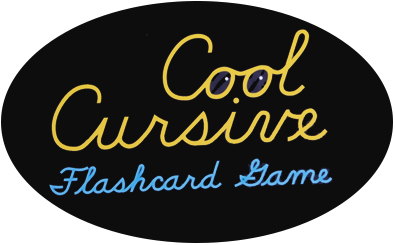Ten Benefits of Teaching Cursive Handwriting
- Relative ease in introducing cursive penmanship to pre-schoolers
Contrary to common beliefs, it is very easy to teach cursive handwriting. It only requires 3 movements: under curve, over curve and up and down. Print handwriting necessitates an even more complex stroke of straight lines and perfect circles. - Prevents reversals and confusion of letters
The letters “b and d”, “f and t”, “g, q and p” are confusing for young children. In cursive, writing the letter “b and d” require a huge difference in directionality. - Enhances spelling ability
In cursive, children learn to spell correctly since hand movements create some muscle memory that retains the spelling patterns. - Develops internal control systems that can be used as tool for learning
In a cursive writing, the incorporation of movement, pressure and visual processing is a bit multifaceted. This augments visual spacial and coordination skills. In writing lowercase letters in print, six strokes are required against three movements in cursive writing. Fluent movement is developed. With cursive writing practice, the neuron connections in the brain, responsible for organizing other kinds of information and skills, are greatly strengthened. - Potential for errors are diminished
Cursive handwriting reduces errors because of the continuous flow of writing. In print, the child picks up the pencil from the paper to start a new letter in a word, thus the potential for mistakes is higher. - Improved reading skills
The goal in reading is to read words instead of letters at a time. Cursive writing promotes reading words, instead of a distinct letter. After words, reading will move to sentences. Thus, remedial support for comprehension and reading of words are occurring less. The child reads what he or she writes as “whole words” rather than as individual letters. - Enforces the skills for patterns in reading and writing
Unlike print writing, lower case cursive writing starts from the same beginning point. In print, various letter start from the top, down, middle and many different positions. Letter inversions and reversals are eliminated. - Prevents erratic spaces between letters and words
In cursive, the flow of writing moves from left to right. It teaches spatial discipline. In print, the child’s handwriting are difficult to discern. The spaces between words are so tight. It is hard to tell where the words begin and end. - Helps Left Handed Children
In print, the left-handed child proceeds to write printing from left to right but will cover what he has written with his arms. This is called the hook position. In cursive writing, the left-handed child learns to write from bottom up and turns the paper clockwise causing great comfort and legibility. - Use as a tool to put thoughts on paper quickly and easily
Mastery of cursive will be to the advantage of any student in the long-run. The child will be able to write faster. The student can get his or her ideas on paper quicker. It can also be advantageous in taking notes from lectures in secondary and further education.
Source: Samuel L. Blumenfield, “How Should We Teach Our Children to Write? Cursive First, Print Later!”
